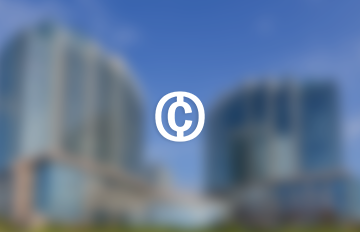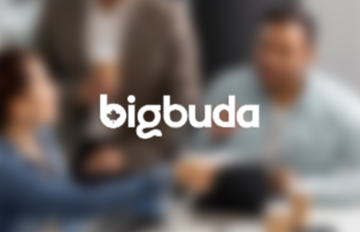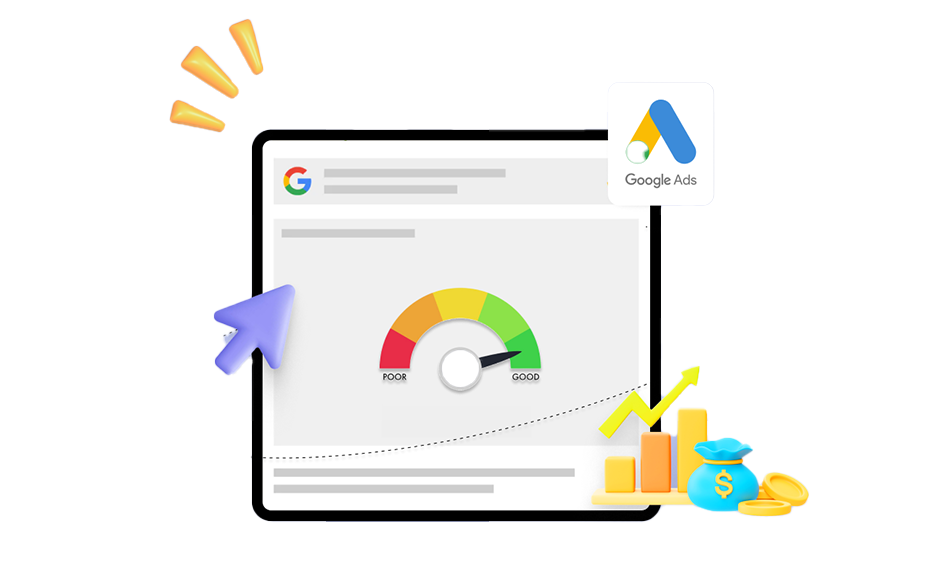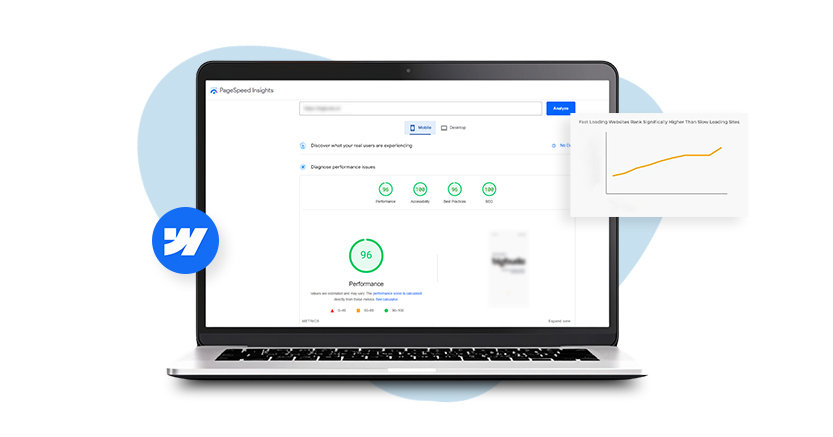TL;DR: Optimizing landing page experience and ad relevancy are major aspects of boosting your Google Ads performance. From website speed optimization to image optimization, there are many ways to increase Google Ads conversion rate. Explore efficient ways for a successful Google Ads campaign, contributing to maximizing business profits.
Setting the correct budget or bidding strategy is not enough to make Google Ads work well. Your ad’s success heavily depends on two important things: landing page experience and ad relevancy. Both of these elements work together to improve your Quality Score, lower your cost-per-click, and boost your conversions.
Businesses that are good at both see significant improvements in their Google Ads conversion rate and the whole Google Ads campaign.
Website speed optimization, enhancing CTAs, mobile optimization, and image optimization are some ways to enhance the landing page experience.
Let’s find out how to boost Google Ads performance by enhancing landing page experience and Ad relevance.
Understanding Google Ads Performance Metrics
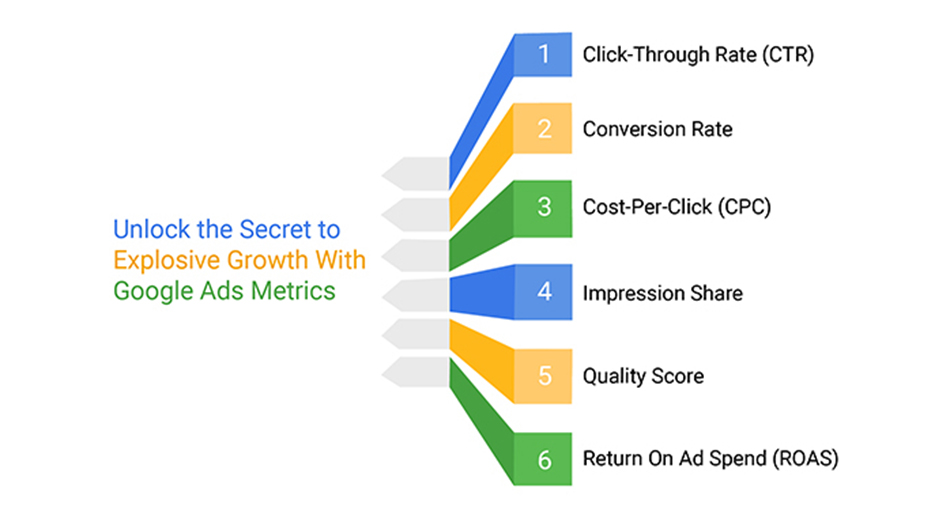
To improve Google Ads performance, you need to know the most important metrics that Google uses to analyze your ad success:
1. Quality Score
This score, ranging from 1 to 10, reflects the relevancy of your ad, keywords, and landing page experience. A better quality score raises your ad’s rank and lowers your CPC, which increases your overall Google Ads ROI.
2. Click-Through Rate (CTR)
This measures the percentage of people who click on your ad after seeing it. A high CTR means that the ad is relevant and interesting, indicating better campaign performance.
CTR = (Total Clicks / Total Impressions) × 100
3. Conversion Rate
This shows the percentage of visitors who take desired actions, like buying something or signing up. Website speed optimization makes pages load faster and easier to use, significantly improving conversion rate.
Conversion Rate = (Total Number of Conversions / Total Number of Visitors) x 100
4. Cost Per Click (CPC)
CPC is how much you pay for each click. A higher Quality Score and more relevant ads can lower CPC, which makes Google Ads optimization and ROI more effective.
Optimizing both your advertisements and landing pages directly impacts CPC. This is why businesses focusing on Google advertisement optimization have better ROI and campaign performance.
CPC = Total Cost / Number of Clicks
How Improving Landing Page Experience Leads to Google Ads Success
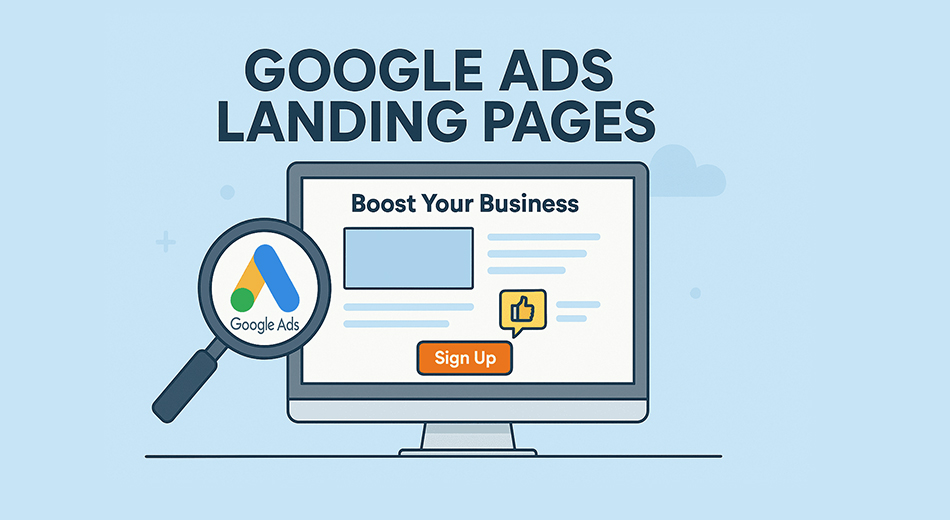
The landing page experience is a critical aspect of Google Ads optimization. Google evaluates landing pages on relevancy, speed, ease of use, and transparency. A smooth landing page experience means that the customer gets what they expect when they click on your ad. This has a direct effect on:
Better Quality Score
A landing page that is well-optimized, meeting the ad intent, and loads quickly can help improve the Google Ads Quality Score. Google gives better rankings and reduced costs per click to pages that are relevant and easy to use.
Google Ads Conversion Rate
A landing page that is accessible and engaging will keep people interested and encourage them to take any desired action. Fast load times and clear CTAs can help increase your Google Ads conversion rate, which will enhance your overall performance.
Lower Cost-Per-Click (CPC)
Google decreases your CPC when your landing page has ads that are very relevant, increasing user engagement. This means that you can receive more clicks and conversions for the same amount of money, which will improve your Google Ads ROI.
Even if your ad copy is great, a bad landing page might make people leave your site more often, convert less, and waste ad spend.
Key Elements of a High-Performing Landing Page
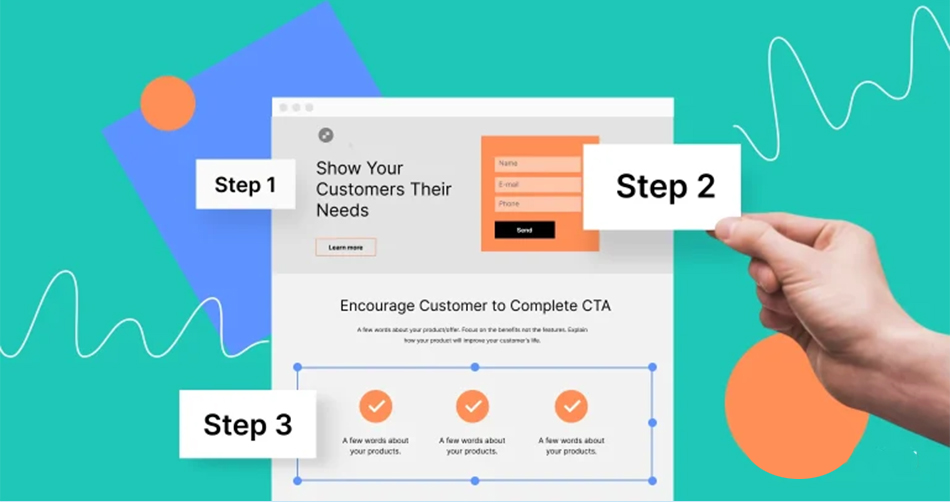
There are a few important things you need to do to make your landing page better for Google Ads:
1. Quick Loading Speed
Pages that load slowly make people leave and lower your Quality Score.
Use website speed optimization strategies, like reducing code, allowing browser caching, and employing a Content Delivery Network (CDN).
2. Mobile-Friendly Design
Responsive design is very important because most people use Google Ads on their phones. Optimize layout for small mobile screens and focus on spacing and fonts for mobile design optimization.
3. Clear and Relevant Content
Make sure that the content on your landing page matches the intent of your ad. Use clear and concise content in clear language with a relevant flow.
4. Strong Call to Action (CTA)
Make it easy for consumers to do the desired action, such as fill out a form, sign up, or buy anything. Highlight your CTA clearly, ideally “above the fold.”
5. Visual Consistency with Ads
For optimal engagement, make sure that the images, colors, and messages align with your ad creative.
6. Bulk Image Optimization
To improve your website speed, bulk image optimization is an effective technique that enhances both your landing page experience and Google Ads performance.
How Ad Relevance Impacts Quality Score and Cost Efficiency
Ad relevancy tells you how well your ad matches the keywords and the content on the landing page. Ads that are very relevant lead to:
- Higher Quality Score Improvement
- Lower CPC
- Higher CTR
- Better Google Ads Conversion Rate
For instance, if your ad says “affordable running shoes” but your landing page mentions only “sports footwear,” Google may see this problem and lower the relevancy and performance. For a successful Google Ads campaign, it’s very important to make sure that the ad copy matches the content on the landing page.
How to Improve Landing Page Experience for Google Ads
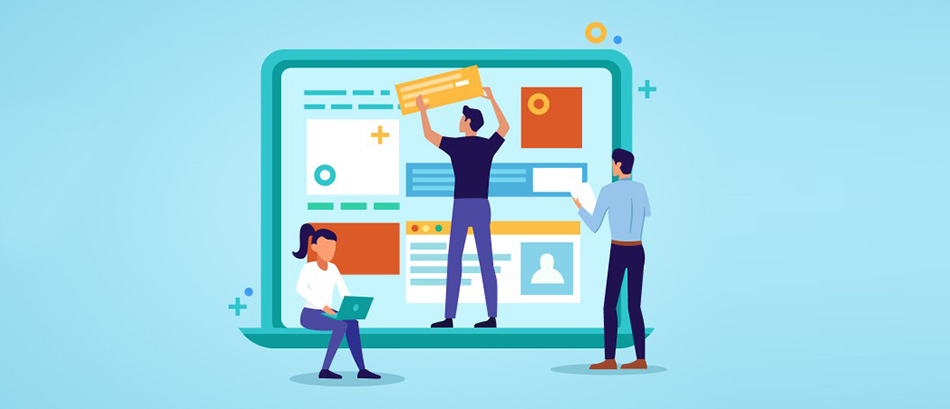
There are several ways to make your landing page better, and most of them focus on PPC landing page optimization. Explore them:
1. Open Your Google Ad Account
First, review your campaigns and figure out which advertisements are performing well and which ones aren’t. Analyzing these performance metrics can help you determine where most of your landing page optimization efforts work well.
2. Evaluate Your Current Landing Page
Look at the speed, usability, and content relevance of your current landing page. Tools like Google Analytics and heatmaps can show you where your landing page is having problems. This can help you improve it and increase the Google Ads conversion rate.
3. Align Content with Ad Messaging
Make sure your landing page content meets the promises stated in your ads. Consistent messaging makes ads more relevant, creates trust with users, and helps in Quality Score improvement.
4. Optimize Call-to-Action (CTA)
A simple and strong CTA guides the user about the next steps or the desired actions. To maximize conversions and Google Ads ROI, try different wording, location, and design.
5. Optimize Landing Page for Mobile Users
Make it readable and easy for mobile users to use. Ensure to simplify language, the buttons that are quick to tap, and the layout that works well on all devices. Mobile SEO makes landing pages better and lowers bounce rates.
6. Speed Up Your Pages
Utilize website speed optimization methods like lazy loading, minifying CSS and JS files, and optimizing images in bulk to make your website faster. Quick loading pages enhance user experience and Google Ads conversion rate.
7. Improve the Visual Hierarchy
Make the visual hierarchy better by putting the most critical information above the fold and drawing attention to your CTA. A well-organized layout boosts engagement and conversions.
8. Personalize Content Based on Ad Intent
Customize the message to fit the user’s intent or the ad keywords. Personalized landing pages make ads more relevant and inspire people to complete the desired actions, increasing Google Ads ROI.
9. Use Trust Signals
Add things like customer feedback, security badges, or industry certifications to your site to make it more trustworthy. Trust signals make visitors feel positive about your site, give them more confidence to buy, and push them to take the desired action, which raises the Google Ads conversion rate.
10. Use Landing Page Extensions (if applicable)
If your advertising uses landing page extensions, make sure these sites are optimized for user experience and relevancy. Use the same methods, quick load speeds, clear calls to action, and aligned content to make sure that every touchpoint gives the same experience. This will improve your overall Google Ads performance.
11. Use A/B Testing
Try out several versions of your landing page to find out which layout, content, and call to action work best. This strategy helps find the most effective element that works best to improve Google Ads performance.
Aligning Ad Copy to Match the Landing Page Content
To maximize the Google Ads ROI, your ad copy and landing page must align. This creates a smooth user experience, which builds trust and engagement. Some important strategies are:
- Putting the same headlines on ads and landing pages
- Reinforcing the promise made in the ad to provide a solution or offer, using the consistent image and color schemes.
- Using standard techniques for ad copy optimization, like adding keywords and clear calls to action.
When ad copy and landing page content align, Google Ads performance improves, Quality Score increases, and CPC decreases.
Tools to Check and Improve Landing Pages and Ad Performance
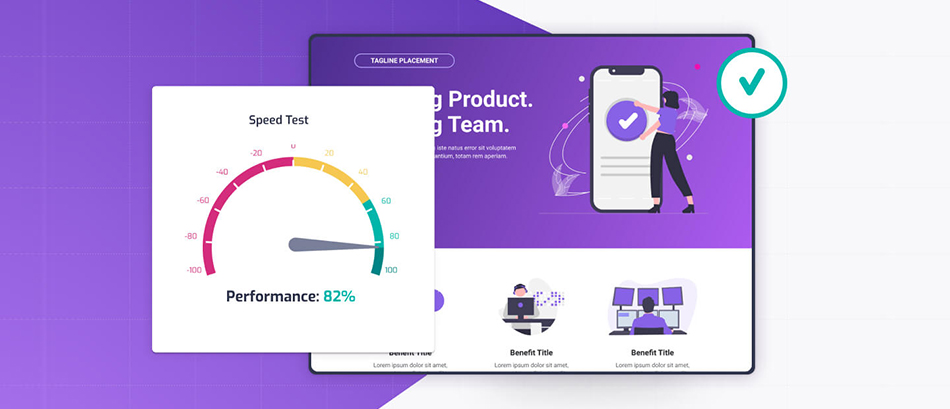
To make your advertising and landing pages work better, you need the correct tools:
- Google Ads Quality Score Reports: Track relevance of your ads, CTR, and landing page experience.
- Google Analytics and Tag Manager: Track conversions and user behaviour.
- PageSpeed Insight: Helps you find the potential areas of website speed optimization.
- Hotjar or Crazy Egg: Use Heatmaps from Hotjar or Crazy Egg to see how users interact with your landing pages and how to optimize them.
Regular checks on your Google Ads campaign ensure its long-term success and term improvement.
Common Mistakes that Hurt Google Ads Performance
Your adverts can be affected by even slight mistakes:
- Ad copy that doesn’t fit the landing page is useless.
- Pages that take a long time to load without optimizing the speed of the website.
- Bad mobile experience.
- Weak or confusing call to action.
- Lack of image optimization.
You can get better ad relevance, a higher Quality Score, and a stronger Google Ads conversion rate if you don’t make these mistakes.
How Optimized Landing Pages Improve Ad ROI
A digital store once had a hard time getting people to buy things, even though they spent a lot on ads. Their landing pages took a long time to load and didn’t match the ad messaging. The load times got a lot better when we used website speed optimization and bulk image optimization.
They also made the ad wording match the information on the landing page better, which made the ads more relevant and the smoother landing page experience.
Conclusion
In the end, we can conclude that boosting Google Ads performance is not just about spending more on advertisements to get better results; you also need to improve the whole customer journey. Businesses can:
- Improve the Quality Score
- Boost the conversion rate of Google Ads
- Lower CPC
- Achieve better Google Ads ROI
- Ensure Google Ads campaign success
The efficient combination of well-optimized landing pages and highly relevant ads creates a seamless user experience, which leads to more conversions and maximizes ad investment.
FAQs
1. How does landing page experience affect Google Ads performance?
2. What is ad relevance and why is it important?
3. What can I do to make my landing page load faster?
4. How can you effectively align ad copy with landing pages?
5. How can I measure my Google Ads optimization efforts?
October 10, 2025
Leave a Comment












